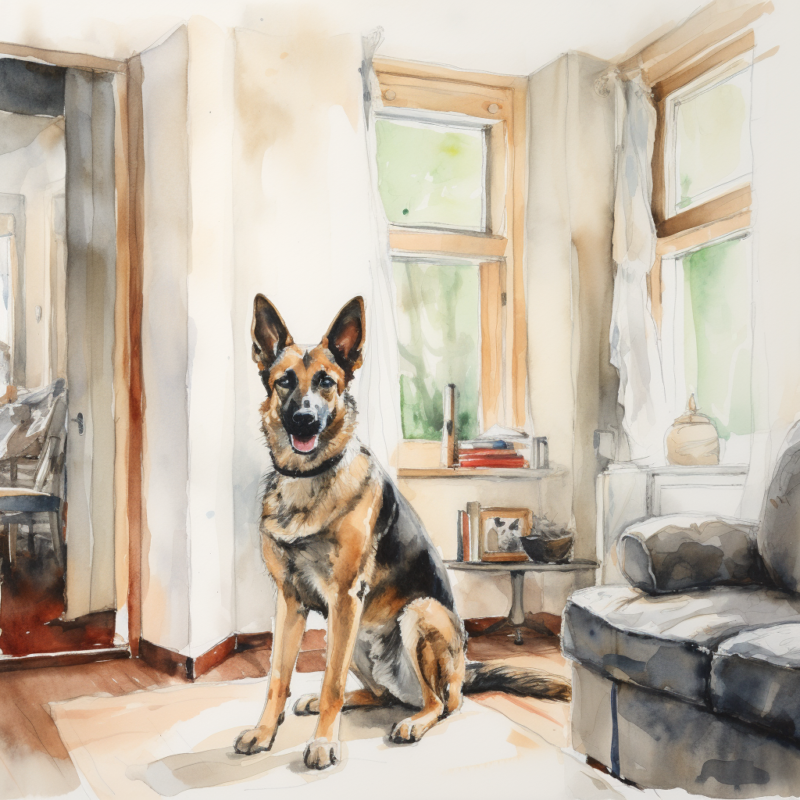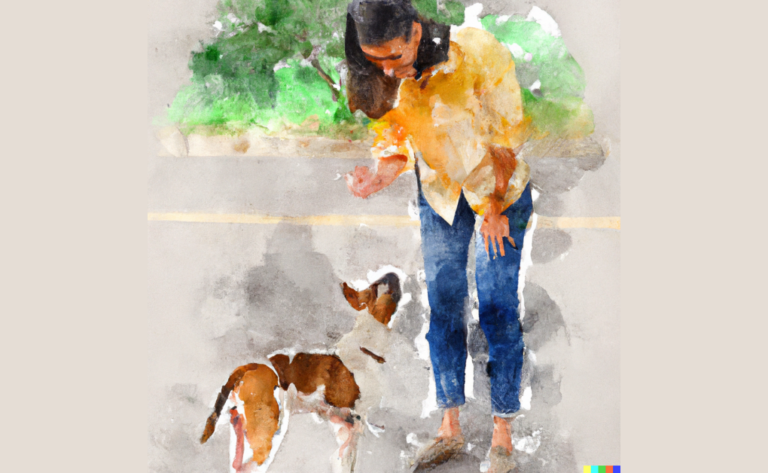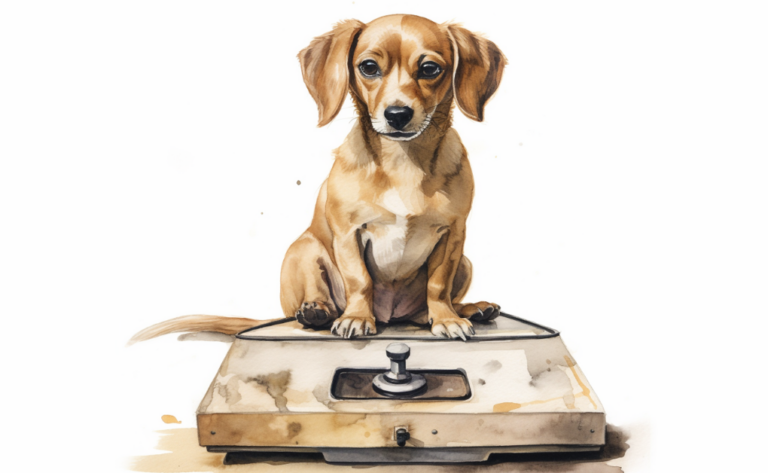7 Dog Breeds That Consistently Have the Most Health Problems
Dogs are beloved companions to many people, and it’s essential to know which breeds are more prone to health problems before adopting one. While all dog breeds can experience common health issues, some breeds are more predisposed to specific issues due to their genetics, physical traits, or breeding practices. Here are some dog breeds that are known to have more health problems consistently:
English Bulldog
While charming and lovable, English Bulldogs are prone to various health issues due to their unique physical characteristics and genetics. Some of the most common health problems in this breed include:
- Brachycephalic Syndrome: English Bulldogs have flat faces and short noses, leading to breathing difficulties, snoring, and sleep apnea. They can also struggle to cool down in hot weather, making them susceptible to heatstroke.
- Hip Dysplasia: This genetic condition occurs when the hip joint doesn’t develop properly, leading to arthritis and pain. It’s common in many large and small dog breeds but is particularly prevalent in English Bulldogs.
- Patellar Luxation: This condition involves the kneecap dislocating or slipping out of place, which can cause pain, limping, or difficulty walking.
- Obesity: Due to their stocky build, English Bulldogs are prone to obesity, exacerbating other health conditions like joint and respiratory problems.
- Skin Issues: The breed’s skin folds can trap moisture and bacteria, leading to skin infections and irritation. Regular cleaning and maintenance are necessary to prevent these issues.
- Cherry Eye: This condition involves the prolapse of the third eyelid’s tear gland, resulting in a red, swollen mass near the eye. It can be treated surgically or through medical management.
- Entropion: This is a genetic condition where the eyelid rolls inward, causing the eyelashes to rub against the cornea. It can lead to corneal damage and irritation and may require surgical correction.
- Ear Infections: English Bulldogs are more prone to ear infections due to their short ear canals and floppy ears. Regular cleaning and monitoring can help prevent these infections.
- Tail Issues: Some English Bulldogs have screw or corkscrew tails, leading to infection, irritation, or other medical issues.
- Heart Disease: The breed can be predisposed to congenital heart defects and other heart-related issues, such as dilated cardiomyopathy and pulmonic stenosis.
It’s essential to work closely with a veterinarian and maintain regular checkups to monitor and address any health issues that may arise. Responsible breeding practices and selecting a reputable breeder can also help minimize the risk of health problems in English Bulldogs.
German Shepherd
The German Shepherd is a large and powerful breed that has been used for centuries as a guard dog, police dog, and military work dog. While still popular as working dogs today, they are also beloved family pets that bring energy and loyalty to any household.
German Shepherds are a popular and intelligent breed prone to specific health issues. Here are some common health problems and ways pet owners can prevent or minimize their occurrence:

- Hip Dysplasia: This genetic condition occurs when the hip joint doesn’t develop properly, leading to arthritis and pain. To prevent hip dysplasia, choose a reputable breeder who screens their dogs for the condition, maintains a healthy weight for your dog, and provides proper nutrition to support joint health.
- Elbow Dysplasia: Similar to hip dysplasia, elbow dysplasia involves the abnormal development of the elbow joint. Preventive measures include selecting a responsible breeder, maintaining a healthy weight, and providing proper nutrition.
- Degenerative Myelopathy: This progressive neurological disorder affects the spinal cord, leading to decreased coordination and, eventually, paralysis. While there’s no known prevention, early detection can help manage the condition better. Choose a breeder who screens their dogs for the DM gene.
- Bloat (Gastric Torsion): This life-threatening condition occurs when the stomach fills with gas and twists on itself. Prevent bloat by feeding your dog smaller meals more frequently, avoiding exercise right after meals, and not allowing them to drink large amounts of water immediately after eating.
- Panosteitis: This is an inflammatory condition affecting the long bones of young, growing dogs. To help prevent panosteitis, ensure your dog receives proper nutrition and maintains a healthy weight.
- Allergies: German Shepherds can be prone to skin and food allergies. Prevent allergies by feeding a high-quality diet, providing regular grooming, and consulting with your veterinarian if you notice any skin irritations or unusual reactions to food.
- Exocrine Pancreatic Insufficiency (EPI): This condition occurs when the pancreas doesn’t produce enough digestive enzymes. While EPI cannot be prevented, early detection and appropriate treatment can help manage the condition effectively.
- Heart Disease: German Shepherds can be predisposed to various heart-related issues. Maintain regular vet check-ups, provide a balanced diet, and ensure regular exercise to support overall heart health.
- Perianal Fistula: This condition is painful in which abnormal openings form around the dog’s anus. Keep your dog at a healthy weight, provide a balanced diet, and maintain good hygiene to help prevent perianal fistulas.
- Epilepsy: This neurological disorder causes seizures and cannot be prevented. However, working with a reputable breeder who screens for epilepsy and provides regular veterinary care can help manage the condition.
Regular veterinary check-ups, responsible breeding practices, proper nutrition, weight management, and exercise are essential in preventing or minimizing the impact of these health issues in German Shepherds.

Great Dane
Great Danes, often referred to as gentle giants due to their immense size yet calm and friendly demeanor. They are recognized for their towering height, muscular build, and elegant appearance. However, they are predisposed to several health issues. Some of the common health problems in Great Danes include:
- Hip dysplasia is a genetic condition where the hip joint doesn’t develop properly, leading to arthritis and pain. To help prevent hip dysplasia, ensure responsible breeding practices, maintain a healthy weight for your dog, and provide appropriate exercise.
- Bloat (Gastric Torsion): This life-threatening condition occurs when the stomach fills with gas and twists on itself, cutting off blood flow. To help reduce the risk of bloat, feed your Great Dane smaller meals throughout the day, avoid heavy exercise immediately before or after meals, and consider raising their food and water dishes to reduce air intake.
- Dilated cardiomyopathy (DCM): a heart condition that causes the heart muscle to enlarge and weaken and can reduce its ability to pump blood effectively. Although DCM is often genetic, early signs of the disease can be detected with regular veterinary check-ups and maintaining a healthy weight.
- Osteosarcoma: Great Danes are at an increased risk for this aggressive form of bone cancer. Early detection is crucial, so monitor your dog for signs of pain, swelling, or limping, and consult your veterinarian if you notice any abnormalities.
- Hypertrophic Osteodystrophy (HOD): This bone disease affects rapidly growing large breed puppies, causing painful swelling and inflammation in the limbs. Ensuring a balanced diet, avoiding excessive calcium intake, and monitoring your puppy’s growth rate can help prevent HOD.
- Wobbler Syndrome: This neurological disorder affects the cervical spine, causing an unsteady gait and potential paralysis. To help prevent this condition, maintain a healthy weight for your dog and avoid activities that strain their neck excessively.
Dachshund
Ah, the beloved dachshund! This adorable little dog is known for its long body and short legs, which make them a joy to watch as they wiggle around.
Dachshunds can be predisposed to several health issues. Some common health problems in Dachshunds include:

- Intervertebral Disc Disease (IVDD): Due to their long spines and short rib cages, Dachshunds are prone to IVDD, which can cause pain, paralysis, or other neurological issues. To help prevent IVDD, maintain a healthy weight for your dog, provide appropriate exercise, and avoid activities that strain their spine excessively, such as jumping from high surfaces or climbing stairs.
- Obesity: Dachshunds are prone to weight gain, which can exacerbate back problems and lead to other health issues like diabetes and joint problems. Feed your Dachshund a balanced diet, provide regularly monitor their weight to prevent obesity.
- Dental issues: Dachshunds are prone to dental problems due to their small mouths and crowded teeth. Brush your dog’s teeth regularly, provide dental chews, and schedule professional dental cleanings to help maintain good oral hygiene.
- Eye disorders: Dachshunds may be susceptible to eye problems like progressive retinal atrophy (PRA) and cataracts. Regular veterinary check-ups and early detection can help manage these conditions more effectively.
- Epilepsy: This neurological disorder can cause seizures in Dachshunds. If you suspect your dog has epilepsy, consult your veterinarian for proper diagnosis and treatment.

Cocker Spaniel
Cocker Spaniels are a popular and affectionate breed; Cocker Spaniels are prone to several health issues. Some common health problems in Cocker Spaniels include:
- Ear infections: Their long, floppy ears make Cocker Spaniels more susceptible to ear infections. To help prevent them, clean and dry your dog’s ears regularly and check for signs of redness, discharge, or foul odor.
- Eye issues: Cocker Spaniels are prone to various eye problems, such as cataracts, progressive retinal atrophy (PRA), and glaucoma. Regular veterinary check-ups and early detection can help manage these conditions more effectively.
- Hip dysplasia: This genetic condition causes the hip joint to develop improperly, leading to arthritis and pain. Ensure responsible breeding practices, maintain a healthy weight for your dog, and provide appropriate exercise to help prevent hip dysplasia.
- Heart conditions: Cocker Spaniels may be prone to heart issues like dilated cardiomyopathy and mitral valve disease. Regular veterinary check-ups and early detection can help manage these conditions.
- Skin issues: Cocker Spaniels can be prone to allergies, skin infections, and seborrhea, which can cause itching, redness, and dandruff. Maintain regular grooming, bathe your dog with a gentle shampoo when needed, and consult your veterinarian if you notice skin issues.
Cavalier King Charles Spaniel
The Cavalier King Charles Spaniel is a small, affectionate, and friendly toy breed dog that originated in the United Kingdom. They are known for their beautiful, silky coat and expressive, gentle eyes. In addition, cavaliers are highly sociable and adaptable, making them great companions for families, singles, and seniors. Unfortunately, despite their many positive traits, this breed can be prone to several health issues, including:

- Mitral Valve Disease (MVD): MVD is a common heart issue in Cavaliers, where the mitral valve degenerates, leading to heart murmurs and, eventually, heart failure. Regular veterinary check-ups and early detection can help manage this condition more effectively.
- Syringomyelia (SM): This neurological disorder is caused by a malformation in the skull, leading to fluid-filled cavities within the spinal cord. It can result in pain, discomfort, and neurological issues. The RSPCA reports that many Cavaliers may develop Syringomyelia, a painful brain condition resulting from over-breeding dogs with skulls that are too small for their brains. Regular check-ups with a veterinarian experienced in the condition and MRI scans, when recommended, can help with early detection and treatment.
- Hip dysplasia: This genetic condition, where the hip joint doesn’t develop properly, can lead to arthritis and pain. To help prevent hip dysplasia, ensure responsible breeding practices, maintain a healthy weight for your dog, and provide appropriate exercise.
- Patellar luxation: This condition occurs when the kneecap dislocates from its normal position, causing pain and mobility issues. Regular check-ups with your veterinarian can help detect early signs, and maintaining a healthy weight can reduce joint stress.
- Eye issues: Cavaliers may be prone to eye problems like cataracts, retinal dysplasia, and progressive retinal atrophy (PRA). Regular veterinary check-ups and early detection can help manage these conditions more effectively.

Pug
Pugs are a small, affectionate, and charming breed of dog known for their wrinkled face, short muzzle, and curly tail. They originated in China and were later popularized in Europe as companion animals. Pugs are known for their friendly and sociable nature, making them excellent family pets. However, due to their unique physical characteristics, they can be prone to several health issues, including:
- Brachycephalic Airway Syndrome: Due to their short noses and flat faces, Pugs often have breathing difficulties, which can lead to respiratory distress, especially in hot or humid weather. Pugs are 54x more likely to have the disease. Keep your Pug cool and avoid over-exertion to help minimize the risk of respiratory issues.
- Eye problems: Pugs are prone to various eye issues, such as corneal ulcers, dry eye, and progressive retinal atrophy (PRA). Regular veterinary check-ups and early detection can help manage these conditions more effectively.
- Obesity: Pugs love to eat, and their small stature makes them prone to weight gain, which can exacerbate existing health problems. To prevent obesity, feed your Pug a balanced diet, exercise regularly, and monitor their weight.
- Hip dysplasia: This genetic condition, where the hip joint doesn’t develop properly, can lead to arthritis and pain. To help prevent hip dysplasia, ensure responsible breeding practices, maintain a healthy weight for your dog, and provide appropriate exercise.
- Skin issues: Pugs’ wrinkles can trap dirt and moisture, leading to skin infections and irritation. Clean your Pug’s facial folds regularly and keep them dry to prevent skin problems.
How to Keep Your Dog Healthy
To maintain your dog’s overall health and well-being, you can take several steps to help your canine companions stay as healthy as possible. Here are some general guidelines to follow:
- Regular veterinary check-ups: Schedule routine visits to your veterinarian to monitor your dog’s health, discuss ongoing treatments, and adjust care plans as needed. Early detection and intervention can make a significant difference in managing health issues effectively.
- Medication and treatment adherence: Follow your veterinarian’s instructions regarding medications, treatments, or therapies for your dog. Consistent and accurate administration of prescribed medications is crucial for managing health problems.
- Balanced diet: Provide a high-quality, age-appropriate diet tailored to your dog’s health needs. Consult your veterinarian about special dietary requirements, supplements, or adjustments based on your dog’s condition.
- Appropriate exercise: Regular, moderate exercise is essential for maintaining your dog’s health. However, consider your dog’s health issues when planning exercise routines, and avoid activities that could exacerbate their condition. Consult your veterinarian for appropriate exercise recommendations.
- Weight management: Maintaining a healthy weight is crucial for dogs with health issues, as obesity can worsen conditions. Monitor your dog’s weight and adjust their diet and exercise accordingly, under your veterinarian’s guidance.
- Mental stimulation: Use interactive toys, puzzles, or training sessions to keep your dog’s mind active and engaged. This can help reduce stress and promote overall well-being.
- Regular grooming and hygiene: Maintain your dog’s coat, nails, ears, and teeth to prevent infections and detect any early signs of health issues. Grooming also allows you to check for new lumps, bumps, or changes in your dog’s skin.
- Environmental adjustments: Make necessary adjustments to your dog’s environment to accommodate their health issues, such as providing orthopedic beds for dogs with joint problems, using ramps to avoid stairs for dogs with mobility issues, or maintaining a calm and quiet environment for dogs with anxiety.
- Emotional support: Provide comfort, love, and emotional support to your dog during challenging times. A strong bond with your pet can positively impact their well-being and recovery.
- Education and awareness: Stay informed about your dog’s health issues, and learn how to recognize signs of worsening symptoms or complications. The more knowledgeable you are about your dog’s condition, the better equipped you’ll be to manage it effectively.
A Guide to Selecting a Healthy Puppy
Choosing a healthy puppy is crucial for first-time pet owners, as it can set the stage for a happy, long-lasting companionship. Here are some tips to help you pick a healthy pup:
- Research breeds: Before selecting a puppy, research different breeds to determine which best suits your lifestyle, energy levels, and expectations. Some breeds are more prone to specific health issues, so knowing what potential health problems to look for in your chosen breed are essential.
- Find a reputable breeder: A responsible breeder prioritizes the health and well-being of their dogs. They should provide a clean, safe environment for the puppies and be knowledgeable about the breed’s specific health concerns. Ask for recommendations from veterinarians, breed clubs, or friends to find a reputable breeder.
- Check medical history: Request the medical history of the puppy’s parents and any available health screenings or genetic tests. This information can help you understand the potential inherited health risks your puppy may face.
- Observe the litter: Spend time observing the litter and the puppy’s interactions with its siblings and the breeder. A healthy puppy should be alert, active, and sociable. Avoid puppies that appear lethargic, overly aggressive, or fearful.
- Examine the puppy: Conduct a physical examination of the puppy, checking for the following:
- Clear eyes and nose without any discharge
- Clean ears without any foul odor or excessive wax
- Healthy coat without any bald patches or excessive scratching
- Properly aligned bite
- A well-rounded belly, but not distended, which could indicate worms
- No lumps or bumps on the body
- Assess temperament: Choose a puppy that matches your lifestyle and expectations. Look for a puppy that is curious, friendly, and confident. Avoid puppies that appear excessively shy or aggressive.
- Veterinary check-up: Once you’ve selected a puppy, schedule a veterinary check-up as soon as possible to ensure your new pet is healthy and up-to-date on vaccinations and deworming.
- Prepare your home: Before bringing your new puppy home, ensure you have all the necessary supplies, such as food, water and food bowls, toys, bedding, and grooming items. Puppy-proof your home by removing hazards and creating a safe, comfortable space for your new pet.
- Educate yourself: Learn about proper puppy care, including feeding, grooming, training, and socialization. The more prepared you are, the better you’ll handle the challenges and joys of raising a healthy, happy dog.
By carefully considering these factors and selecting a healthy puppy, first-time pet owners can enjoy a rewarding and fulfilling relationship with their new canine companion.
Frequently Asked Questions
Disclaimer: The information provided on this veterinary website is intended for general educational purposes only and should not be considered as a substitute for professional veterinary advice, diagnosis, or treatment. Always consult a licensed veterinarian for any concerns or questions regarding the health and well-being of your pet. This website does not claim to cover every possible situation or provide exhaustive knowledge on the subjects presented. The owners and contributors of this website are not responsible for any harm or loss that may result from the use or misuse of the information provided herein.







